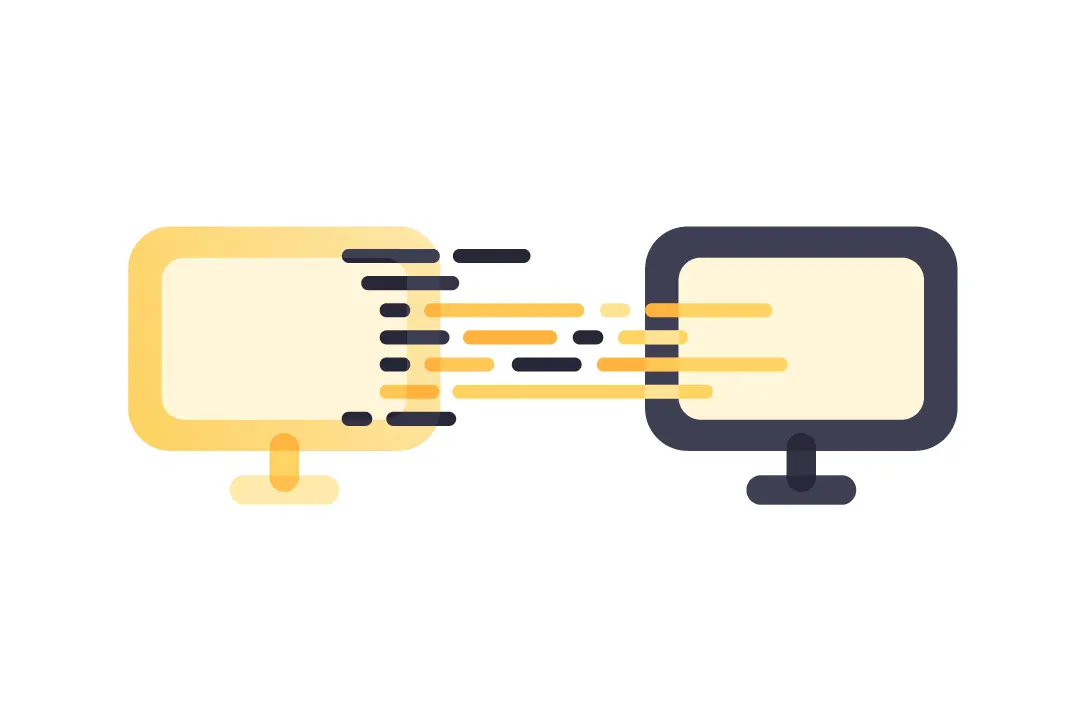In the realm of software development, choosing to stay with one vendor is the best choice for certain specific projects. However, sometimes you might need to switch for financial reasons, the need for advanced technical skills, or to update your technology stack. When this happens, managing a smooth transition is key to maintaining continuity and quality. So, what’s the best way to handle it?
In this article we’ll explore the vendor transition process, detailing how to select, assess, and onboard a new vendor. We’ll also provide tips for transitioning into the new partnership, while ensuring it aligns with your project’s needs and goals.
How to Choose a Vendor that Meets Your Needs
When choosing a vendor, assess their alignment with your project vision and goals, as well as their technical abilities. Consider the following:
Create a List of Requirements
Thoroughly understand your project’s scope, goals, and specific needs, then create a clear list of requirements. This list should include technical specifications, desired outcomes, timelines, and budget. Also, consider functionality, security, scalability, and maintenance needs. This internal clarity will guide your vendor selection process, ensuring you match with a provider capable of meeting your project’s demands.
Conduct Research

When conducting your research on potential vendors, ensure the following:
- Tech Stack Compatibility: Look into specific programming languages, databases, and development frameworks the vendor specializes in. Ensure these match your project’s technical requirements precisely.
- Expertise Alignment: Scrutinize the vendor’s team composition. Ensure they have specialized roles such as back-end developers familiar with your needed technology and front-end developers experienced in user-centric design. Also, make sure the vendor has a diverse team of:
- UX/UI designers for interface work,
- project managers knowledgeable in your methods,
- quality assurance team for testing,
- DevOps to streamline deployment,
- security experts for data protection,
- product managers for strategic guidance.
- Portfolio Analysis: Examine their past work in-depth, looking for projects in similar industries, of similar scale, or that have used similar technologies. Note their success rates, problem-solving abilities, and innovation level.
- Client References: Don’t just collect references; engage with them. Ask specific questions about the vendor’s responsiveness, quality of work, adherence to deadlines, and ability to adapt to changes.
- Learning the Team: Beyond management, make calls to those who will be hands-on with your project, like tech leads or senior developers. Understand their approach, thought process, and how they’ve tackled past challenges. This can give insight into how they’ll handle your project’s specific needs.
Assess a Vendor’s Engagement and Planning
When evaluating if the vendor is asking the right questions and providing a clear roadmap, look for detailed inquiries post-NDA about:
- Software Documentation: They should want to understand the architecture, features, and any known issues from your documentation.
- Existing Code Assessment: Expect them to discuss methodologies for reviewing and understanding your codebase, possibly suggesting improvements or identifying challenges.
- Design and Material Access: They need to review all design assets and project materials to ensure consistency and feasibility in design implementation.
- Business/Product Roadmap: A comprehensive discussion about your future vision and goals helps them align their services with your strategic direction, ensuring they’re a good fit for your project’s long-term success.
Communicate Your Transition Objectives
Be clear about why you’re transitioning to a new vendor, whether it’s cost, technology, or service quality. This clarity helps the new provider understand your priorities and adapt their approach accordingly. Transparency in this phase is key to a successful partnership and achieving the desired outcomes from the switch.
How to Conduct the Transition Process
When conducting the transition process, a quality vendor must ensure that their vision, communication, and work ethic align with your long-term goals. The goal is to have a partnership that transcends technical skills for a stronger team. Here are the detailed transition steps that should follow after they sign an NDA:
1. Conduct Technology Assessment

The transition process should start with a comprehensive technology assessment session. This includes a detailed code review to evaluate standards and documentation, an infrastructure assessment reviewing capacity and security, and a thorough security audit for vulnerabilities and compliance with data protection laws. Each area will be carefully examined to provide a foundation for a smooth transition and alignment with your goals.
Following the comprehensive assessment, the vendor should provide a detailed document outlining recommendations for improvements, ensuring all potential enhancements are captured and addressed. While this session is typically a paid service to ensure thoroughness and commitment, some companies might offer it as a complimentary part of their proposal, showcasing their dedication to a successful partnership.
2. Create a Team onboarding plan
The vendor should coordinate with the previous team for detailed knowledge sharing sessions. They must have access to critical resources such as servers, databases, 3rd party integration API keys, infrastructure configurations, source code, domain hosting, and CI/CD pipelines, etc. Additionally, you can share essential project management tools like Jira, Asana, or Trello, along with project roadmaps, documentation, and existing designs.
After this is done, provide access to all necessary communication channels to facilitate smooth collaboration. This approach ensures the new team is fully equipped and ready to take over the project seamlessly.
3. Transitional time buffer
Incorporate a transitional time buffer following the tech assessment to allow the new team to address and implement essential recommendations. This period is crucial for them to familiarize and align with the existing codebase, especially if their best practices differ from the previous vendor’s. A well-allocated buffer time ensures a smooth adaptation and minimizes potential disruptions in the development workflow, contributing to a more consistent and perfect project continuation.
After transitional period
Effective collaboration with a new vendor is key to the success of any project. To ensure a smooth partnership, consider the following critical areas:
Feedback and Collaboration
It’s important to provide timely feedback to the new vendor. Remember, smooth collaboration in technology requires adapting to each other’s methods and addressing issues early.
Onboarding and Orientation
Ensure the new team has enough time to fully onboard and orient to the specific details of your project, depending on its size and complexity. This understanding is crucial for a successful collaboration.
Performance Metrics and KPI Tracking
Regularly define and monitor key performance indicators (KPIs) related to deliverables, timelines, budget, and quality. This monitoring is key to maintaining project control and ensuring all components meet the set standards.
Long-term Strategic Planning
Engage in strategic planning with the vendor to align the project with evolving business goals. These sessions are vital for adapting to business and market changes, ensuring the project remains relevant and successful.
Wrapping Up
Switching to a new software vendor is a significant step that can greatly benefit your project. It involves careful planning, clear communication, and aligning with your goals. Done right, it leads to better quality, efficiency, and success in your software development endeavors. Follow the insights provided in this article for a seamless transition.






